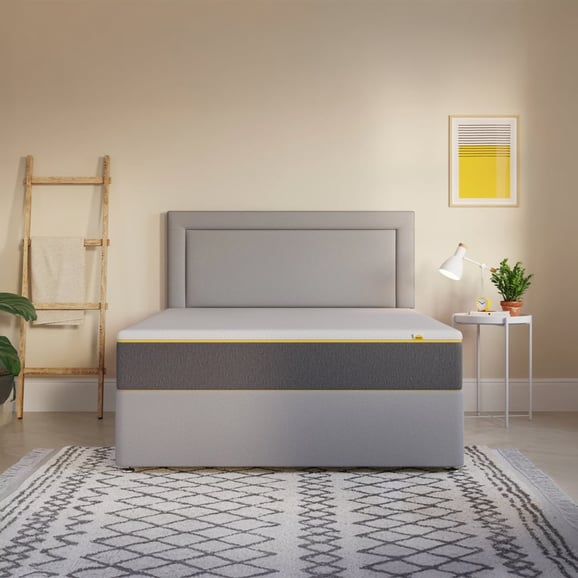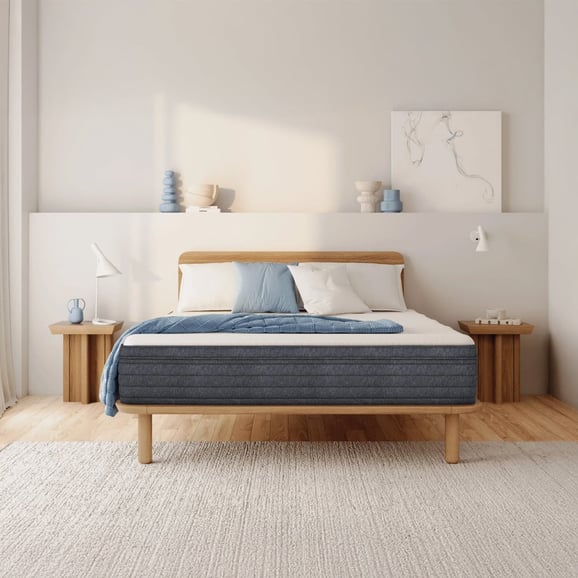Winter is a time of year that can bring a lot of joy and cheer. Unfortunately, for some of us, it can also bring feelings of sadness and emptiness. Seasonal Affective Disorder (SAD) is a type of depression that is linked to the change in seasons. It can be a difficult disorder to manage, but with some lifestyle changes and the right bedroom tips, you can beat the winter blues and get back to enjoying the season!
Introduction to Seasonal Affective Disorder (SAD)
Seasonal Affective Disorder (SAD) is a type of depression that is linked to the change in seasons, usually occurring in winter when there is less light and more darkness. It can lead to feelings of sadness, low energy, difficulty concentrating, and difficulty sleeping. It can also cause physical symptoms, such as headaches, digestive issues, and fatigue. SAD is a serious condition and can have a significant impact on your quality of life.
What Causes SAD?
The cause of SAD is not completely understood, but there are several theories that are being studied. It is believed that SAD is linked to a disruption in the body’s circadian rhythm, which is the internal clock that helps regulate our sleep-wake cycle. It is also thought that the shorter days and longer nights can cause a disruption in the body’s serotonin levels, which can lead to symptoms of depression.
Other factors that may contribute to SAD include genetic predisposition, age, gender, and lifestyle factors such as diet and exercise. It is important to consult a healthcare professional if you are experiencing any symptoms of SAD to get the help you need.
Signs and Symptoms of SAD
Symptoms of SAD include feeling depressed, having a lack of energy, difficulty concentrating, difficulty sleeping, and changes in appetite. Other physical symptoms include headaches, digestive issues, and fatigue. If you are experiencing any of these symptoms, it is important to speak to a healthcare professional about your concerns.
Tips for Creating a SAD-Friendly Bedroom
Creating a bedroom that is conducive to rest and relaxation can help ease the symptoms of SAD and make it easier to get through the winter. Here are some tips for creating a SAD-friendly bedroom:
Lighting Tips for a SAD-Friendly Bedroom
Lighting your bedroom can be a great way to make it a SAD-friendly sanctuary. By choosing the right type of light, brightening up dark corners, and avoiding blue-hued lighting, you can create a bedroom environment that helps to ease the symptoms of SAD and make it easier to get the restful sleep you need.
Natural light is one of the most important considerations when it comes to a SAD-friendly bedroom. Exposure to sunlight has been shown to boost serotonin levels, making it a great way to ease the symptoms of SAD. The best way to get your daily dose of sunlight is to spend some time each day outdoors but that’s no good for the bedroom, instead we recommend a light therapy box to mimic the same effects.
Second to light therapy boxes, and much cheaper are halogen bulbs. Halogen lights are an excellent choice for bedrooms because they are known to produce a warm, yellow light that mimics the sun’s rays. Warm yellow bulbs are especially beneficial for managing SAD symptoms since they don’t create a lot of blue light.
On the things to definitely not consider, it’s worth discussing the harmful effects of blue-lighting. Blue light is a type of light that can be extremely harmful to the human body, especially if you are trying to manage SAD symptoms in your bedroom. Blue light can disrupt your body’s natural circadian rhythm, causing you to produce less melatonin. Blue light can also cause eye fatigue, increase your risk of macular degeneration, and can even lead to insomnia when used at night. Avoiding blue light in your bedroom is one of the best ways to manage SAD symptoms, especially if you are trying to use light therapy to boost your serotonin levels.
Lighting plays an important role in creating a SAD-friendly bedroom. Natural light is best, so make sure to open your curtains or blinds during the day to let in as much natural light as possible. At night, you can use warmer-colored LED bulbs, such as yellow or orange, to create a calming atmosphere.
Color Tips for a SAD-Friendly Bedroom
Many different colors can impact your mood in a positive way. If you want to create a SAD-friendly bedroom, it’s essential to choose colors that have a positive effect on your mood and help to reduce feelings of anxiety.
Blue and Green are colors that are proven to have a calming effect but they are by no means the only option. Here are some other colors that are perfect for creating a soothing and inviting atmosphere in a SAD-friendly bedroom:
Yellow and Orange – These are warm and vibrant colors that are known to boost energy and enthusiasm. If you’re looking for a way to push away feelings of anxiety and unwind, these colors are scientifically proven to help.
Purple and Pink are both colors that are associated with feelings of joy and romance. If you’re looking for a way to create a romantic atmosphere, these colors are your best option.
White / Off-White is the perfect color for adding extra brightness to a room. It’s also known to help elevate feelings of happiness and provide a sense of peace and tranquility. If you’re looking for a way to create a calm and serene bedroom, white is your ideal choice.
Choose colors that are warm and calming, such as pastels or earth tones. Avoid bright colors, as they can be too stimulating and make it harder to rest.
Temperature Tips for a SAD-Friendly Bedroom
The temperature of your bedroom is key to getting a restful sleep and feeling energized when you wake up. Knowing how to maintain a SAD-friendly temperature in your bedroom can help you make the most of the short winter days and get the rest you need.
Temperature has a significant impact on SAD, with lower temperatures causing more symptoms than higher ones. The ideal range for a comfortable bedroom temperature is between 16 and 20°C, depending on the season. While the summer months may be a bit warmer, the winter months are best kept cooler. This is because a higher temperature can reduce the amount of serotonin in the brain, which is essential for regulating mood and energy levels. Keeping your bedroom temperature on the lower side can help boost serotonin levels, reducing the chance of experiencing SAD symptoms.
Ultimately, the temperature in your bedroom is really important. Aim for a temperature that is cool but not too cold. Too hot or too cold can make it difficult to sleep.
Furniture Tips for a SAD-Friendly Bedroom
The furniture in your bedroom can also make a difference. Choose furniture that is comfortable and inviting. Avoid furniture that is too big or bulky, as this can make the space feel cramped and uncomfortable.
Conclusion
Seasonal Affective Disorder (SAD) can be a difficult disorder to manage, but with some lifestyle changes and the right bedroom tips, you can beat the winter blues and get back to enjoying the season. The key is to create a SAD-friendly bedroom that is conducive to rest and relaxation. Make sure to let in natural light during the day, use warmer-colored LED bulbs at night, choose calming colors for your bedroom, maintain a comfortable temperature, and choose furniture that is comfortable and inviting. With the right bedroom tips, you can overcome SAD this season and make the most of winter!














